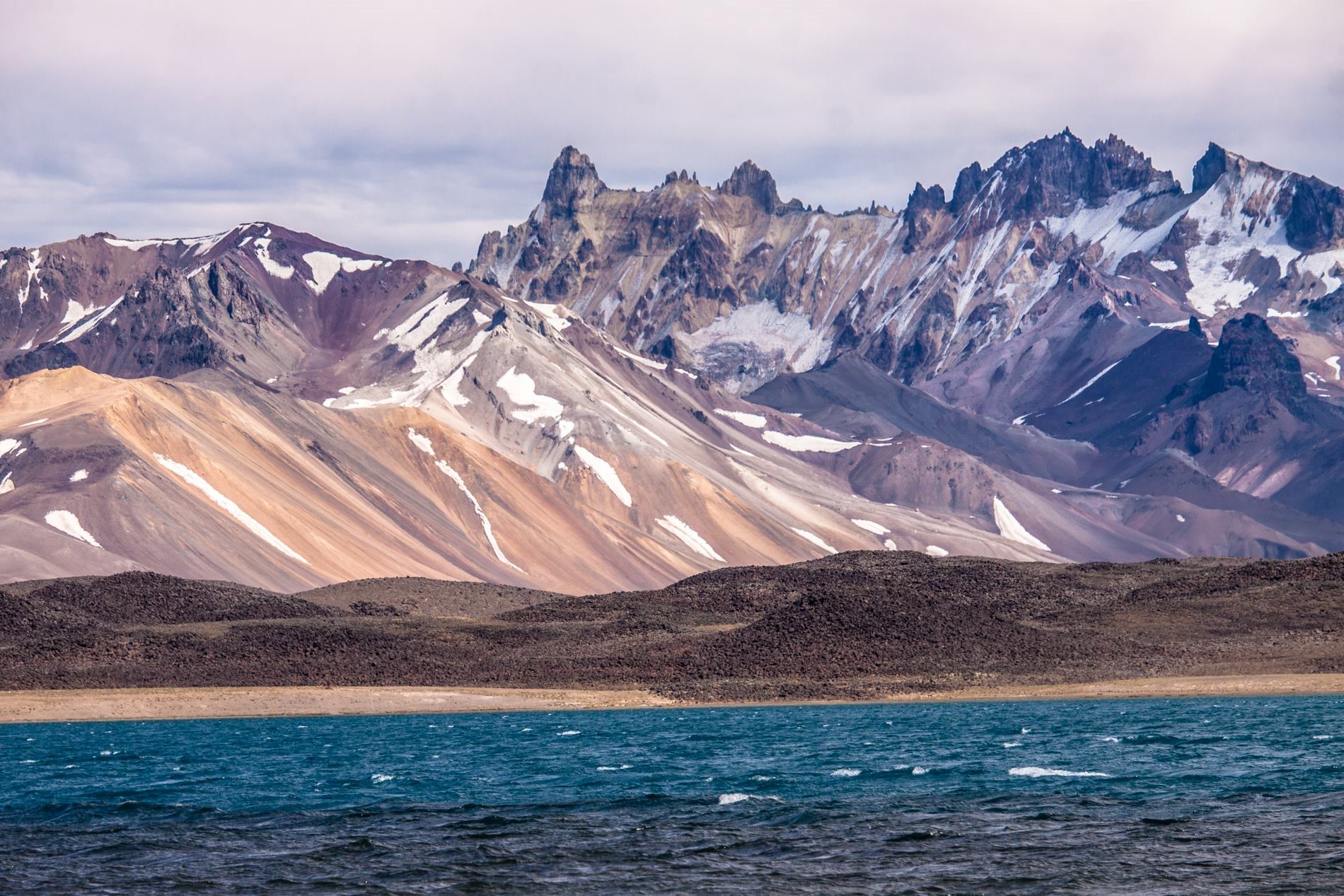Laguna del Diamante is located on a subsidence produced by the collapse of A volcano and all its water is the product of the melting that gives rise to the Diamante River and which, in turn, gives the lagoon a depth of 70 meters.
¿A What is its name? Next to it, the Maipo Volcano rises and is reflected in the mirrors of water you can see a diamond-shaped figure very similar to that of a diamond.
The beauty of the setting that surrounds it and its water source make Laguna del Diamante one of the most protected places in the province of Mendoza and in turn, invites all who wish to visit it, to enjoy it responsibly. saber.
Next, we tell you all the information you need to know before going:
How get to Laguna del Diamante?
Laguna del Diamante is located in the department of San Carlos and 220 kilometers from l to Mendoza city.
If you find yourself in the city, To access you have to r take a 120-kilometer route along National Route 40 to the town of Pareditas.
It is always important check the status of Route 40 before setting off.
The distance between Pareditas and the Reserve Diaman Lagoon te is approximately 100 kilometers.
Once There, you can choose to take Provincial Route 101 or continue along Route 40 until the junction with Provincial Route 98 and from there, to the west.
Upon arrival, you must register at the entrance to the Reserve and pay the entrance fee. Likewise, we recommend you book in advance through your website.
Flora and Fauna
Although gray predominates in the area, plant life appears between stones adding green tones to the landscape considered “Jungle of the arid Andes”.
Due to the low temperatures of the mountain range, the different species have to adapt to survive these climatic conditions.
For this reason, its outstanding flora are the grasslands of huecú, yellow firewood and yareta: all with well developed roots and accumulating stems of water to survive periods of extreme cold, wind and dryness.
Regarding its fauna, the most emblematic animal species is the Guanaco: they spread over the great plains and during the winter they migrate to the lower areas to graze.
Also, with guanacos there are high mountain mice and a great variety of birds such as goldfinches, whirlpools, cauquenes, agachonas, mountain rangers and every so often, condors appear.
Finally, in the lagoon you can find three species of trout: brown, rainbow and fontinalis. These were located there and there is no scientific certainty that the lagoon had indigenous fish.
Is it possible to fish in Laguna del Diamante?
Yes, fishing is only for sport and who want to participate in this activity must have a valid fishing license.
In addition, other mandatory requirements are the use of individual float, ropes and stakes for mooring, life jacket, whistle and frog legs.
What does it protect Laguna del Diamante Reserve?

The Laguna del Diamante Reserve was created to protect and conserve nbsp ; everything about its landscape: wetlands, glaciers, flora, fauna and the archaeological/paleontological material that inhabits it.
Also, one of the main values is maintain its imposing water mirror that is 3,250 meters at the foot of the Maipo Volcano (5,323 meters) with the aim that present and future generations can benefit and enjoy the area, as well as preserve the water source of the Uco Valley.
Your story
As we mentioned earlier, the Diaman River It pours its waters into the lagoon and is part of history.
Until the arrival of the Spanish, the river was a boundary between two indigenous peoples that inhabited the area: the Huarpes, located to the North and the Puelches, to the South.
Their main activity in common was the guanaco hunting and to survive the harsh winters, during the summer They used stones of volcanic origin to dry the meat and stock up.
What to do?
For those who prefer to visit remote and under-exploited areas of the traditional, Laguna del Diamante in Mendoza is a perfect point.
Due to the climatic conditions of the place, the opening season runs from November to March, a short period to discover its magnificent landscapes.
Among the activities that can be carried out are:
- Excursion to the Lagoon in 4x4.
- Trekking along the marked paths.
- Photo safaris to capture the beauty of animals such as condors and guanacos.
- Sport fishing for trout.
- Climbs and ascents to the Maipo Volcano.
Recommendations and guidelines:
For to be able to have a great experience in Laguna del Diamante, we leave you some recommendations and guidelines to keep in mind account , always remembering to be responsible tourists:
- Hydrate well during the visit to avoid the common symptoms of acute mountain sickness.
- Use sunscreen and wear glasses, a hat and warm clothes.
- The reserve has public toilets but does not provide anything. It is important to know that everyone has to bring their own supplies (water, hygiene and health items, etc.).
- Pets, motorcycles and weapons are not allowed.
- Take care of the signs of the place and respect the indications: it is not possible to enter areas not marked.
- Respect the flora and fauna: it cannot be under any concept to extract elements of nature as a “souvenir”.
- Throw the garbage in the place indicated when entering de la Reserva, better known as “Refugio Alvarado”.
- If you smoke, put out your cigarette well to avoid any inconvenience and save the butts.
- Swimming or diving in the lagoon is prohibited .
If you want us to organize a tailor-made excursion or a package in Mendoza. Contact us!